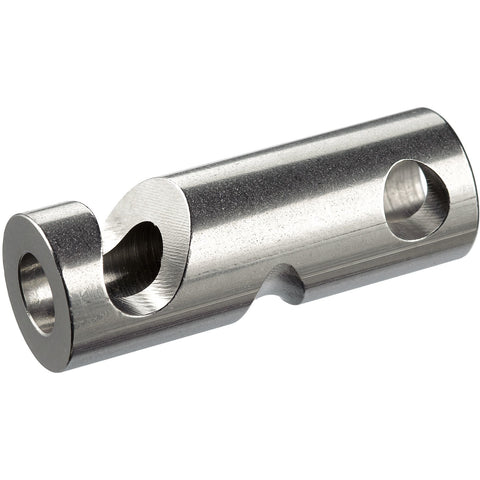SMC Brake Bar
- Stainless Steel
- 7/8"
- Grooved
Aluminum vs. Stainless Steel?
- Aluminum is lighter.
- Aluminum is less costly.
- Aluminum provides greater levels of friction.
- Stainless steel is more durable, handles additional heat developed under heavy loads and on longer rappel.
- Stainless steel allows for a smoother/faster rappel.
- Stainless steel helps keep ropes “cleaner” and lasts longer.
Why use the different styles of bars?
- Tie-Off Bars provide added friction/control and facilitate lock-off of rope to maintain position and/or hold a load.
- Bars with the “training” groove are be used as 1st or 2nd bar to help keep ropes aligned properly.
- Bars with angled slot are designed to “snap” onto rack frame for more secure placement.
- Bars with straight slot are designed for added safety so that the rack may not be loaded backwards.
- U shaped stainless steel bars are designed to help dissipate heat and reduce weight. (Note– please refer to warning on the use of U shaped bars with tie-off bars.)
FEATURES AND BENEFITS
- SMC Brake Bars are aluminum or stainless steel and available in a variety of styles and sizes.
- SMC Aluminum brake bars are available in 7/8".
- SMC Aluminum brake bars available with straight or angled slot and with or without “training” groove.
- SMC Stainless steel brake bars are available as U-shaped or tubular style and with or without a “training” groove.
- SMC Stainless steel Tie-Off Bars (aka Hyperbars) are designed to facilitate quick and easy lock-off.
- SMC Stainless steel Tie-off Bars aid in creating greater compression on other bars for better friction control.
- SMC racks & bars may be purchased separately so that the user may have a greater range of set-up configurations tailored to meet their individual needs for non-NFPA applications and as replacement parts.
IMPORTANT CAUTIONARY NOTE – Do not use a Tie-Off Bar to slow your descent when using the U-shape brake bars as the friction resulting when the rope passes over the straight edge of the brake bar may cause excessive wear and/or damage to the rope with the potential for system failure.
Customer Reviews
QUESTIONS & ANSWERS
Have a Question?
Be the first to ask a question about this.

